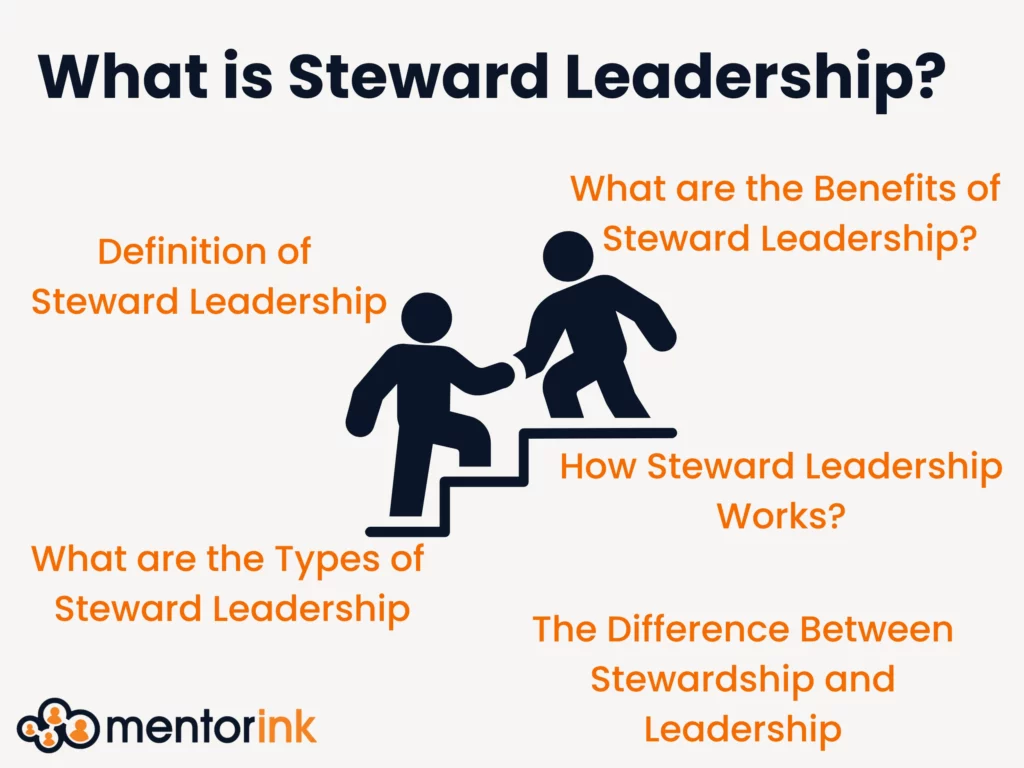
The definition of leadership in the workplace has been interpreted differently in recent years. Steward leadership promotes responsibility, service, and long-term stewardship of assets, team, and organization. Steward leadership style is gaining traction because of its focus on ethical growth, sustainability, and the development of others.
Definition of Steward Leadership
Steward leadership can be described as the act of overseeing or handling resources and people in a responsible, ethical, and sustainable way. In this leadership style, the leader considers oneself a caretaker rather than an owner. Professionals are responsible for the organization’s resources and well-being, which must be managed with care, foresight, and accountability.
When it comes to the definition of steward leadership, it is fundamentally based on two ideas: responsibility and accountability. Leaders must not only guarantee that resources (whether financial, personnel, or any other asset) are used properly, but also that they leave a constructive legacy for future generations. This frequently entails looking beyond short-term advantages and focusing on long-term sustainability and the welfare of future generations.
A successful steward leader would give priority to the requirements of their business and team while making decisions that promote growth, innovation, and ethical outcomes. Stewardship leader is a strong commitment to ensuring that the resources and opportunities available now are accessible and helpful in the future.
What are the Types of Steward Leadership?
Steward leadership is not just a part of business life. In different fields the steward leadership model is known to have a high success rate.
- Ecological Stewardship
Environmental stewardship entails leaders taking responsibility for environmental sustainability. These executives ensure that their organization’s operations are environmentally friendly and use resources in a way that doesn’t deplete or harm the environment. This can include reducing waste, promoting renewable energy, and implementing sustainable business practices.
- Social Stewardship
In Social stewardship leadership, those leaders focus on taking care of people and ensuring their well-being within an organization or workplace. This type of leader prioritizes employee development, workplace diversity, equity, and overall morale. They recognize that the true strength of any organization lies in its people and invest in their growth, health, and happiness.
- Financial Stewardship
In financial stewardship, leaders are held accountable for managing the organization’s finances in a sustainable, transparent, and ethical manner. Such leaders focus on using financial resources wisely to ensure that the organization is not only profitable in the short term, but also financially stable in the long term.
Our blog content about “Different Leadership Styles” can give you more information about how other leadership models work.
How Steward Leadership Works?
Steward leadership is often linked to servant leadership. While both concepts emphasize service to others, they are different in approach and focus.
Servant leadership is a leadership style that places the highest priority on meeting the needs of others. In a servant leadership style, leaders make the needs of their team a priority and empower, support, and nurture their growth. In other words, the servant leader is a facilitator, removing obstacles that prevent their team from reaching their full potential. Their main goal is to improve the well-being of their people.
While both servant leadership and steward leadership focus on service, steward leaders have a broader responsibility. Stewardship leadership is about more than just serving individuals. This approach also requires a duty to manage all resources—whether financial, human, or environmental—ethically and sustainably.
In short, servant leadership focuses on people in specific places. Steward leadership goes a step further, balancing serving people with the ethical management of resources. Steward leaders must serve, protect, guide, and be accountable for the organization’s long-term health and impact on society.
What are the Benefits of Steward Leadership?
As with other types of leadership, steward leadership has many advantages in different areas. These advantages can be listed as follows;
Servant Leadership Helps Employee Engagement
Steward leaders who take responsibility for their teams’ well-being make their employees feel more valued and engaged. Leaders who prioritize professional development, work-life balance, and overall employee happiness will find their teams are more motivated and productive. This creates a positive workplace culture where employees are motivated to invest in the company’s mission. This can be considered as an crucial key benefits of leadership in total.
Better Decision-Making
Steward leaders who focus on long-term goals and consider the impact of their actions on future generations make more thoughtful and informed decisions. These acts will result in better resource management, more strategic planning, and a reduced risk of negative consequences.
Positive Social and Environmental Impact
Steward leaders advocates for social and environmental responsibility. These leaders ensure their organization has a positive impact on society by promoting ethical practices, reducing environmental harm, and investing in communities. This will enhance the organization’s corporate social responsibility profile and create new opportunities for growth.
The Difference Between Stewardship and Leadership
Leadership is about guiding, inspiring, and influencing others to achieve specific goals. Stewardship, on the other hand, is about responsible management and care of resources for the long term.
Leadership is about setting a vision, making decisions, and motivating people toward success. On the other hand,stewardship is about accountability, sustainability, and ensuring that resources—whether people, finances, or the environment—are used ethically and preserved for future generations.
A leader may drive short-term results or changes, but a steward ensures that those results are sustainable and beneficial in the long run—and that’s what makes the difference.
In short, leadership is about leading people, while stewardship is about taking care of everything within your charge—people, assets, and the organization—and ensuring they thrive today and tomorrow. The ideal leader also embodies stewardship principles, balancing immediate needs with long-term responsibilities.


